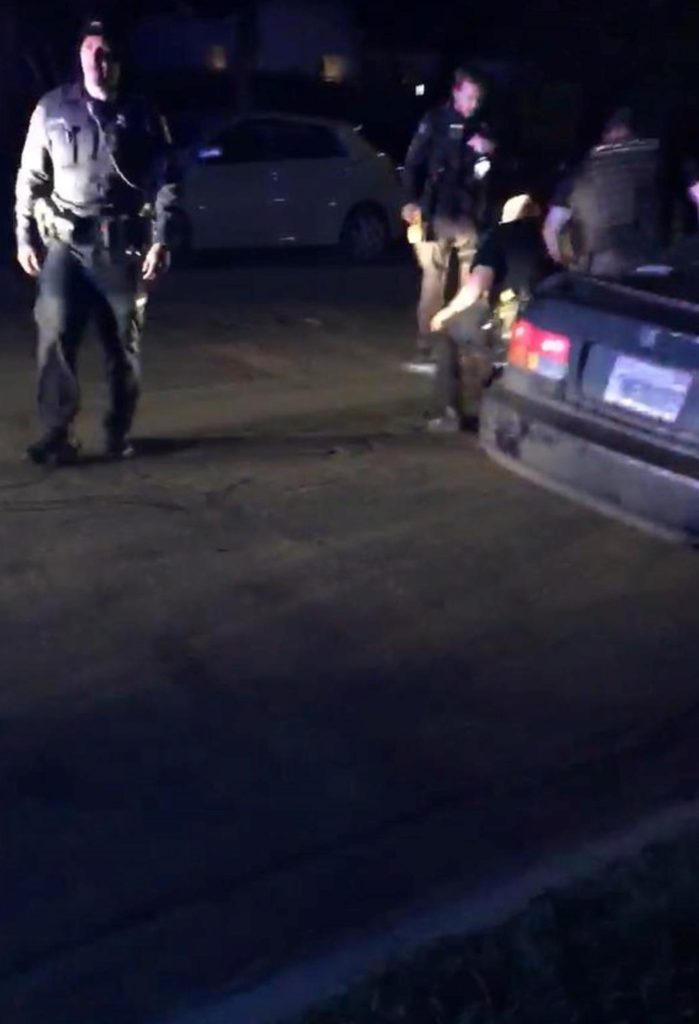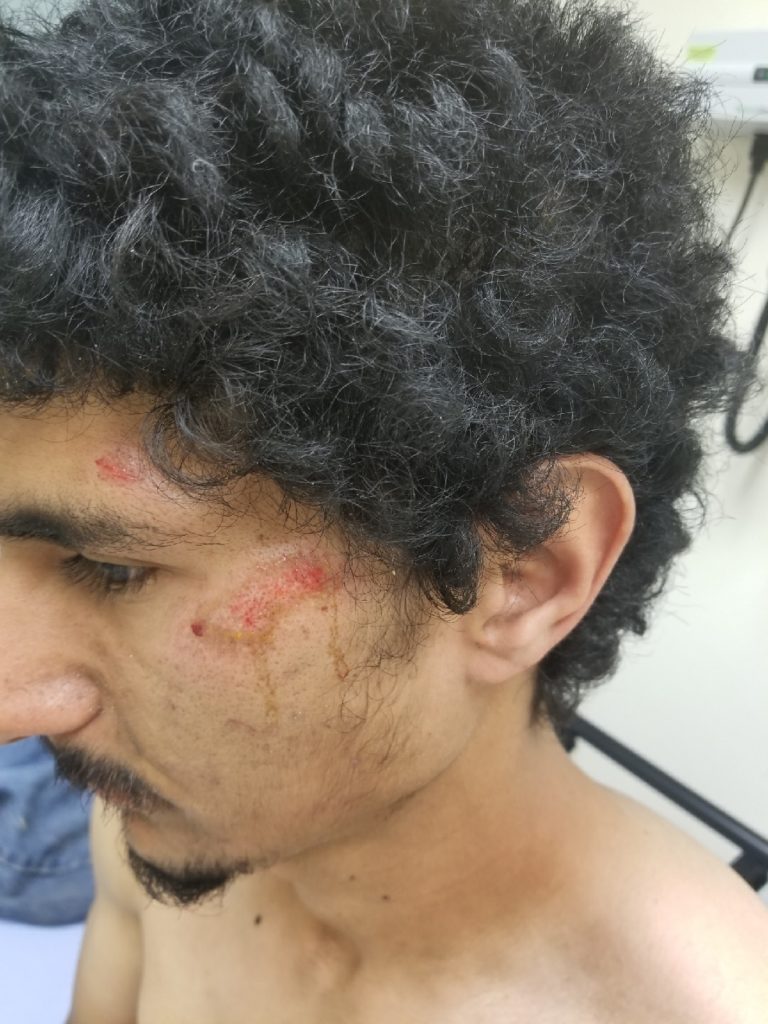Piccuta Law Group Files Lawsuit for Police Brutality Against Salinas Police for Tasering Man During Traffic Stop
The civil rights lawyers from Piccuta Law Group have filed a new lawsuit against City of Salinas police officers. The lawsuit alleges that the firm’s client was pulled over on a routine traffic stop when he was tasered and pulled out of his vehicle. Once on the ground, with multiple police officers on top of him, he was then tased additional times. The lawsuit was filed in Monterey County Superior Court and is pending before the honorable Thomas Wills. The lawsuit is entitled Rodriguez v. City of Salinas, Et Al. and is designated case # 20-CV-001293.
Specifically, the lawsuit alleges that on April 20, 2019, the firm’s client was pulled over for an alleged license plate violation. Because of the date, 4/20, and because of his previous experiences, the client believed he was being harassed and targeted by the police. Out of frustration, the client flipped off the police officers Kile, Neff and Pritt, and then voluntarily pulled over as signaled by the officers.

The officers were apparently in no mood to tolerate the client’s expression in the form of a middle finger. The officers aggressively approached the client’s parked car from both sides and began screaming at him. Officer Kile then tased the client without warning from the passenger side. The client was then dragged out the driver side door by officer Pritt and thrown face-down onto the pavement. While on the ground, the client was held down by officers Pritt and Neff while officer Kile repeatedly tased the client on various parts of his body.
The Facts Alleged in the Police Brutality Lawsuit
Below are the actual allegations taken directly from the lawsuit filed in the Superior Court:
7. On April 20, 2019, at approximately 9:00 p.m., Mr. Rodriguez was driving home from work, heading eastbound in the outside lane on E. Market St. in Salinas, California.
8. As Mr. Rodriguez approached the intersection of E. Market St. and Carr Ave., another vehicle turned left from Carr Ave. onto E. Market St., also heading eastbound, directly in front of Mr. Rodriguez. Mr. Rodriguez then activated his left-turn signal and moved his vehicle into the inside lane in order to pass the vehicle that had pulled out in front of him from Carr Ave.
9. Mr. Rodriguez continued eastbound on E. Market St. until he approached the intersection with N. Sanborn Rd., where he was facing a red light and brought his vehicle to a stop.
10. At this time, Defendants Kile and Pritt were partnered together and on patrol in a Salinas Police Department patrol vehicle operated by Pritt, also heading eastbound on E. Market St. As Pritt and Kile approached the intersection with N. Sanborn Rd., the patrol vehicle came to a stop next to Mr. Rodriguez.
11. After the light at N. Sanborn Rd. turned green, Mr. Rodriguez continued eastbound toward Eucalyptus Dr. On this portion of the route, the outside lane ended and merged with the inside lane in which Mr. Rodriguez was driving. As a result, Pritt merged the patrol vehicle into the inside lane and was directly behind Mr. Rodriguez.
12. Mr. Rodriguez then approached a red light at the intersection with Eucalyptus Dr. As he did so, he activated his left-turn signal and entered the left-hand turn pocket. Pritt, who had stopped directly behind Mr. Rodriguez, activated the patrol vehicle’s lights.
13. Mr. Rodriguez believed that Pritt and Kile were targeting and harassing him because of his appearance and because the date was 4/20. The belief was also based on Mr. Rodriguez’s experiences, having been pulled over multiple times in the past for what he believed to be similar reasons. As a result, Mr. Rodriguez put his hand out of the sunroof of his vehicle and flipped off Pritt and Kile with his middle finger.
14. While the vehicles were stopped at the Eucalyptus intersection, a Salinas Police Department patrol vehicle operated by Defendant Neff passed by heading westbound on E. Market St. For similar reasons, Mr. Rodriguez stuck his hand out the window and flipped off Neff. Neff then changed course and positioned his vehicle behind that of Pritt and Kile to assist with the traffic stop.
15. As Mr. Rodriguez turned his vehicle from E. Market St. onto Eucalyptus Dr., Pritt initiated his patrol vehicle’s siren. At this point, Mr. Rodriguez was only about four houses from his residence and so he brought his vehicle to a stop on the eastside curb line in front of his home. As he slowed his vehicle to a stop, Mr. Rodriguez became fearful of potential retribution from Defendants for flipping them off. As a result, he honked his horn so that his brother might come outside. He then put his vehicle in park, turned off the engine and rolled down his windows.
16. Within seconds, Mr. Rodriguez was aggressively approached by Pritt on the driver side and Kile on the passenger side. Both officers began screaming at Mr. Rodriguez and immediately opened the doors on both sides of the vehicle.
17. Without warning, Kile reached into the vehicle and tased Mr. Rodriguez in drive-stun mode. Pritt then pulled Mr. Rodriguez out of the vehicle and onto the street, face-first.
18. Neff then approached Mr. Rodriguez who was on the ground in the street. Neff and Pritt held down Mr. Rodriguez while Kile again applied his Taser to Mr. Rodriguez approximately four or five times.
19. While on the ground outside of his vehicle, Mr. Rodriguez attempted at all times to comply with Defendants’ commands.
20. Mr. Rodriguez was placed in handcuffs, lifted off the ground and forcibly placed in a patrol car. He was then transported to the Salinas Police Department for processing.
21. At the Police Department, Pritt prepared and issued Mr. Rodriguez a citation for alleged violations under Pen. Code § 148(a)(1), Veh. Code § 5201(a) and Veh. Code § 21658(a).
22. Mr. Rodriguez was picked up from the Police Department by his dad and brother and taken home. Later that night, he presented to the emergency room to seek treatment for the injuries suffered in the attack on him by Defendants.
23. The criminal case against Mr. Rodriguez was later dismissed in the interest of justice.
24. Defendants’ unreasonable use of force directly and proximately caused Mr. Rodriguez to incur medical expenses and to endure physical pain, mental suffering, loss of enjoyment of life, disfigurement, physical impairment, inconvenience, grief, anxiety, humiliation and emotional distress.
25. In the course of a traffic stop for a license plate violation, multiple officers held down a compliant citizen so that he could be tased repeatedly as a punishment for flipping them off. This conduct was despicable and was carried out with a willful and conscious disregard for Mr. Rodriguez’s rights and subjected him to cruel and unjust hardship. As such, Defendants’ conduct was malicious and oppressive.


The Claims Advanced by our Civil Rights Lawyers
The police excessive force lawsuit, filed by our civil rights lawyers, advances three claims. First, a violation of the Thomas Bane Civil Rights Act. Second, a claim for battery by a police officer. Third, a claim for intentional infliction of emotional distress.
All three claims are brought under state law. An individual can also bring civil rights claims under federal law pursuant to 42 U.S.C. § 1983. However, when they do so, they are subject to having the case proceed in federal court. There are advantages and disadvantages to advancing a civil rights lawsuit in federal court. However, a major disadvantage is having to obtain a unanimous jury verdict.
This means that you must convince 100% of the jury that you have won your case. If there is one stubborn or holdout juror who sides with the defense, the result could be a mistrial which is essentially a victory for the defense. Whereas, in state court, you only need to convince 75% of the jury in order to obtain a verdict and win your case. As such, someone who advances a civil rights case with state law claims only, can remain in state court where it is arguably easier to win a jury trial.
The Thomas Bane Civil Rights Act
The Thomas Bane Civil Rights Act is set forth in California Civil Code § 52.1. It is an extremely powerful state civil rights law. Our civil rights lawyers believe that the Bane Act is more powerful than its federal civil rights counterpart- 42 U.S.C. § 1983. There are several reasons for this.
First, like 42 U.S.C. § 1983, it allows for the recovery of attorney fees if you win your case. Second, it allows for treble damages up to three times actual damages. Treble damages serve as a penalty and may be awarded to punish a wrongdoer to prevent him or her from similar bad acts in the future. For example, if a person was to prevail on a Bane Act claim and the jury awarded him $100,000 in damages, the jury could also award $300,000 more simply as a penalty against the defendant who violated the Bane Act. Finally, the Bane Act also provides a statutory penalty of $25,000 if a violation is found.
Treble damages serve as a penalty and may be awarded to punish a wrongdoer to prevent him or her from similar bad acts in the future.
Our civil rights lawyers won a civil rights case earlier this year. In that case our attorneys prevailed on a Bane Act claim. The jury awarded our client $430,000 for his pain and suffering damages. The jury also awarded our client $280,000 as a penalty for the officers violating the Bane Act.
A Claim for Battery By a Peace Officer
Our civil rights lawyers also brought a claim for battery by a peace officer. To prevail on this claim a person must prove all of the following:
- that he was intentionally touched by the officer
- that the officer used unreasonable force in doing so
- that the person touched did not consent to the touching
- that the person touched was harmed
- that the use of the unreasonable force was a substantial factor in causing the harm
When a jury decides whether or not battery by a peace officer occurred, they must determine the amount of force that would have appeared reasonable to a police officer in the same situation. In making this determination, the factors to consider include:
- the seriousness of the crime at issue
- whether the person posed an immediate threat to the safety of officers or others
- whether the person was actively resisting arrest or attempting to evade arrest.
Our civil rights lawyers typically advance a claim for battery by a peace officer in every police brutality case they handle.
A Claim for Intentional Infliction of Emotional Distress
To prove a claim for intentional infliction of emotional distress, like the one advanced in the civil rights lawsuit, a person must prove:
- that the conduct complained of was outrageous
- that the person who performed the conduct intended to cause emotional distress
- that the victim suffered severe emotional distress
- that the conduct complained of was a substantial factor in causing the emotional distress
Typically, a person who has suffered severe emotional distress requires mental health counseling or medical treatment for their psychological injuries.
Typically, a person who has suffered severe emotional distress requires mental health counseling or medical treatment for their psychological injuries. A person who suffers from emotional distress may develop conditions such as post-traumatic stress disorder, anxiety and depression. These conditions require the help of a mental health expert such as a psychiatrist, psychologist or licensed therapist. The effects can be permanent, long-lasting and re-triggered even if they improve.
Contact One of Our Civil Rights Lawyers Today to Discuss Your Police Misconduct Case
The civil rights lawyers at the Piccuta Law Group have great experience handling civil rights cases involving police misconduct. We have handled or considered hundreds of civil rights cases. We have obtained six-figure civil rights verdicts in both state and federal court and regularly handle civil rights cases involving violations of the First Amendment (free speech); Fourth Amendment (excessive force-unlawful-arrest/seizure/detention); 8th Amendment (cruel and unusual punishment; Fourteenth Amendment (deliberate indifference to medical needs of a pre-trial detainee); among others.
Contact one of our civil rights attorneys to discuss your case. A consultation is free. If we take your case, there is no fee for our services unless we recover for you. Contact us today.
About the author: The content on this page was written by California civil rights lawyer and Monterey personal injury attorney Charles “Tony” Piccuta. Piccuta graduated with honors from Indiana University-Maurer School of Law in Bloomington, Indiana (Ranked Top 35 US News & World Report 2018). Piccuta took and passed the State bars of Arizona, California, Illinois and Nevada (all on the first try). He actively practices throughout California and Arizona. He is a winning trial attorney that regularly handles serious personal injury cases and civil rights lawsuits. He has obtained six and seven figure verdicts in both state and federal court. He has been recognized by Super Lawyers for six years straight. He is AV Rated by Martindale Hubble. He is a member of the Consumer Attorneys of California, American Association for Justice, National Police Accountability Project, Arizona Association of Justice, Maricopa County Bar Association and Scottsdale Bar Association, among other organizations.
Disclaimer: The information on this web site is for informational purposes only and does not constitute legal advice. It is attorney advertising. Reading and relying upon the content on this page does not create an attorney-client relationship. If you are seeking legal advice, you should contact our law firm for a free consultation and to discuss your specific case and issues.
References:
[1] http://leginfo.legislature.ca.gov/faces/codes_displaySection.xhtml?lawCode=CIV§ionNum=52.1.

